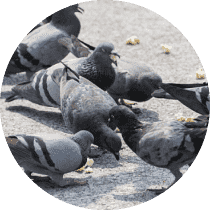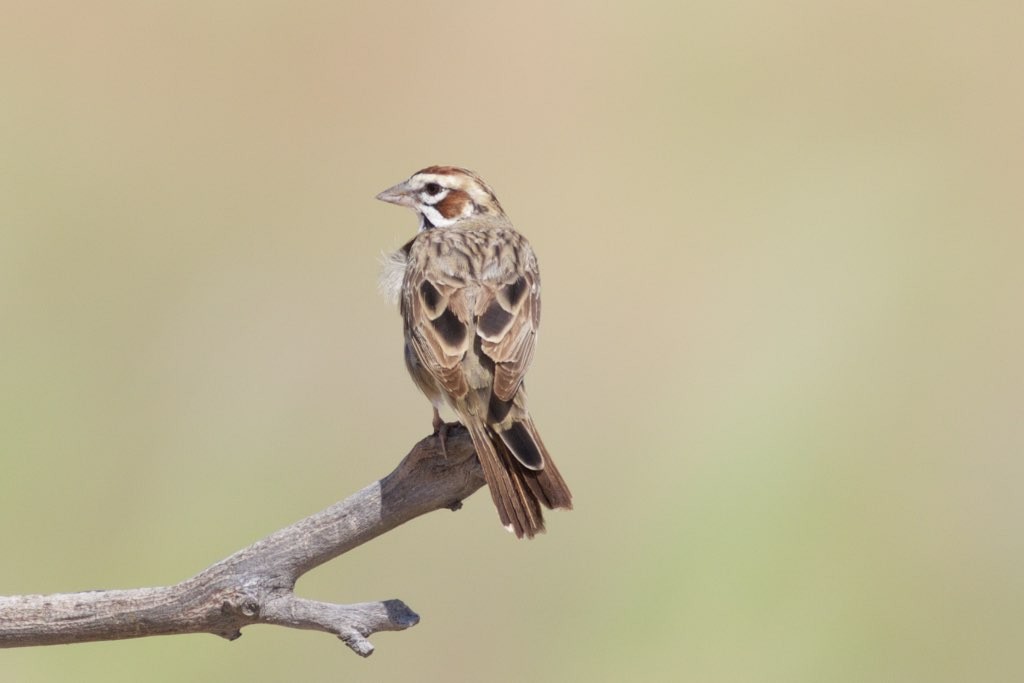Lark Sparrow
A species of Lark Sparrows Scientific name : Chondestes grammacus Genus : Lark Sparrows
Lark Sparrow, A species of Lark Sparrows
Botanical name: Chondestes grammacus
Genus: Lark Sparrows
Content
Description People often ask General Info
Description
This passerine bird breeds in southern Canada, much of the United States, and northern Mexico. It is much less common in the east, where its range is contracting. The populations in Mexico and adjacent states of the United States are resident, but other birds are migratory, wintering in the southern United States, Mexico and south to Guatemala. It is a very rare vagrant to western Europe, with two accepted records in Great Britain in 1981 and 1991. The lark sparrow is distinctive. Adults have a typically sparrow-like dark-streaked brown back, and white underparts except for a dark central spot. The cheeks and crown sides are chestnut, with white eyebrow and crown stripes. The dark tail's corners are also white. Young lark sparrows are duller, and the underparts are streaked. These birds forage on the ground or in low bushes. They mainly eat seeds, but insects, including grasshoppers, are also eaten in the breeding season. They form flocks on migration or in winter. The breeding habitat is a variety of open habitats including grasslands and cultivation. Lark sparrows nest on the ground, laying three to six eggs in a grass cup nest sheltered by a clump of grass or other vegetation. The eggs are white with black scrawling. The song is two clear notes followed by a mixture of buzzes and trills. The flight call is a thin sit. Measurements: Length: 5.9-6.7 in (15-17 cm) Weight: 0.8-1.2 oz (24-33 g) Wingspan: 11.0 in (28 cm) 
Size
15-17 cm (5.75-6.75 in)
Colors
Brown
Black
Bronze
Gray
White
Life Expectancy
7 years
Nest Placement
Ground
Clutch Size
3 - 6 eggs
Incubation Period
1 - 2 broods
Number of Broods
11 - 12 days
Nestling Period
11 - 12 days
Feeding Habits
Lark Sparrow primarily forage on the ground for insects and seeds, with a seasonal preference for insects in summer and seeds in winter. They obtain their food by picking from foliage and the ground surface.
Habitat
Lark Sparrow thrives in open, grassy habitats dotted with trees and shrubs. They are commonly found in pastures, farmlands, and roadsides. Their preferred environments include orchards, open woodlands, and fields left fallow. These birds favor mesquite grasslands, savannas, and sagebrush steppes as well. With adaptable altitudes and climates, lark Sparrow occupies a range of vegetation types during breeding, migration, and wintering seasons, extending to pine-oak forests, thorn scrub, and agricultural landscapes with scattered trees and hedgerows.
Nest Behavior
Lark Sparrow's females select nest sites and build the nests. Nesting activities can vary in height and location, repurposing nests from other birds. Lark Sparrow starts nest building during its breeding season, followed by egg-laying, with both parents involved in caring for the young.
Nest Characteristics
Lark Sparrow's nests are either on the ground in a shallow depression or in trees/shrubs around 4.5 feet up. Construction involves grass, twigs, and stems, with a lining of finer grass or horsehair. The cup-shaped nest can be a reused structure from other bird species.
Dite type
Granivorous
People often ask
General Info
Feeding Habits
Bird food type
Bird Feeder Type

Platform

Ground
Sounds
Song
Recording location: United States
Behavior
Lark Sparrow predominantly spend their time foraging on the ground but are also known to perch on elevated points such as trees, shrubs, and man-made structures. These birds are monogamous within a breeding season, engaging in elaborate courtship rituals where males display unique strutting behavior akin to turkeys, including tail feather fanning and wing drooping, punctuated by offering the female a twig prior to mating. Territorial disputes among males are intense and can escalate to physical altercations, but interactions with female intruders trigger courtship displays. As the breeding period concludes and incubation nears its end, lark Sparrow exhibit increased sociability, gathering in groups for foraging. In colder seasons, they form mixed-species flocks, notably with White-crowned and Vesper Sparrows, indicating adaptive communal behaviors for resource optimization.
Species Status
Not globally threatened.
Scientific Classification
Phylum
Chordates Class
Birds Order
Perching birds Family
New world sparrows Genus
Lark Sparrows Species
Lark Sparrow 